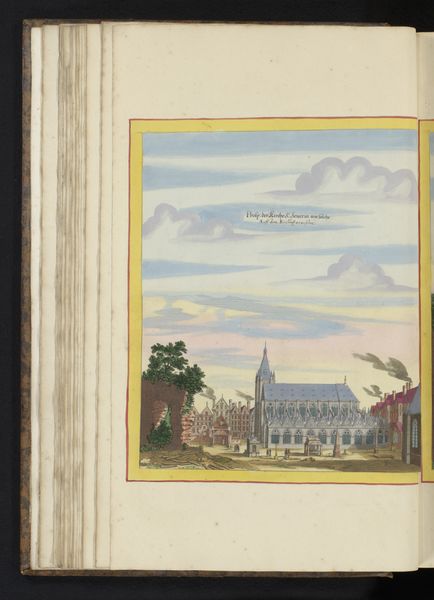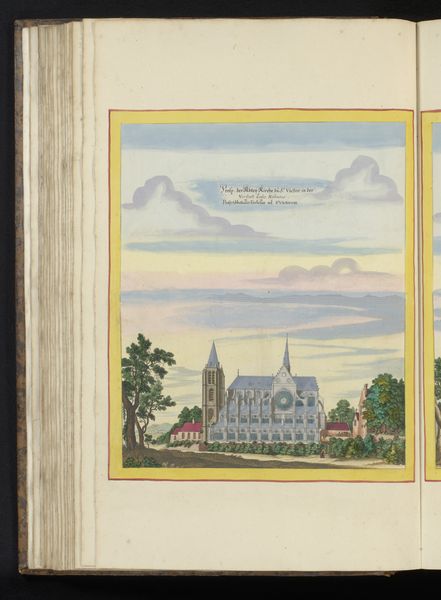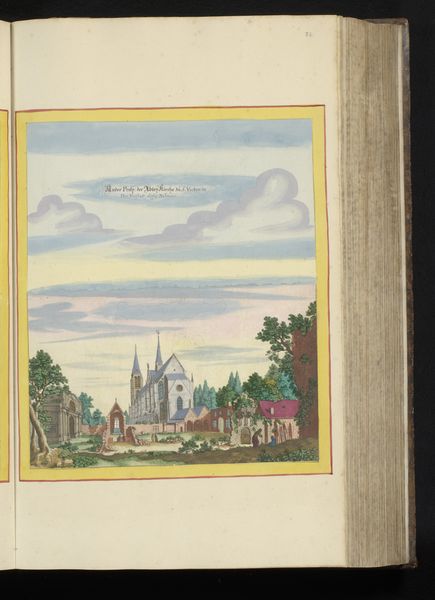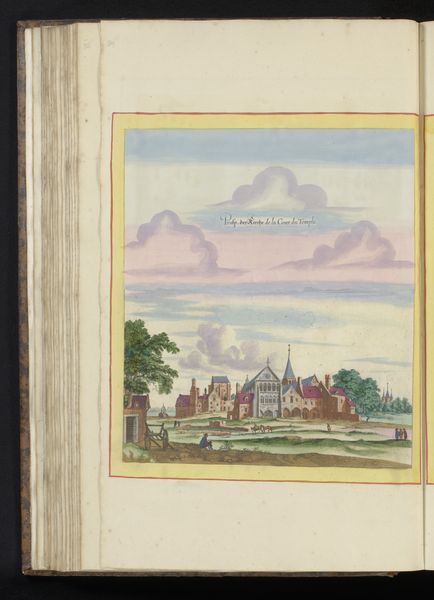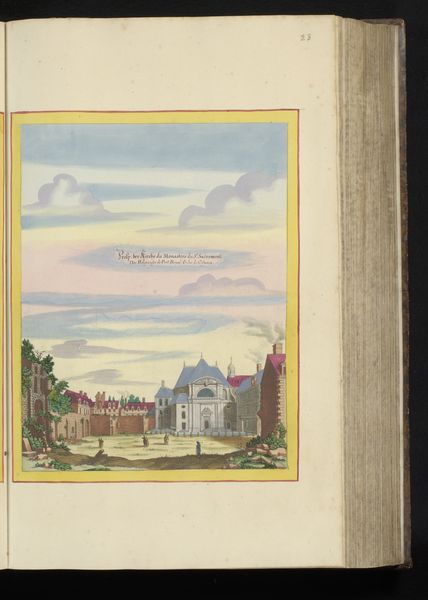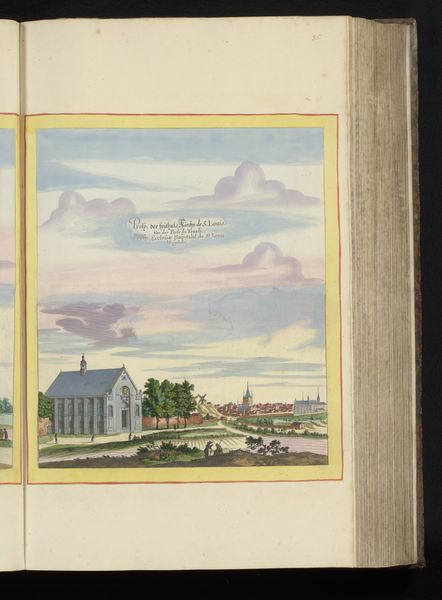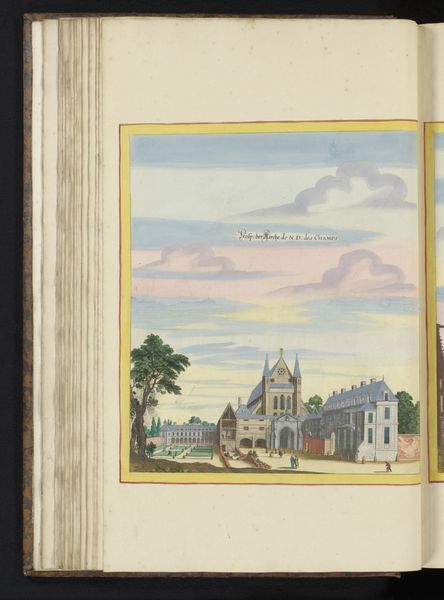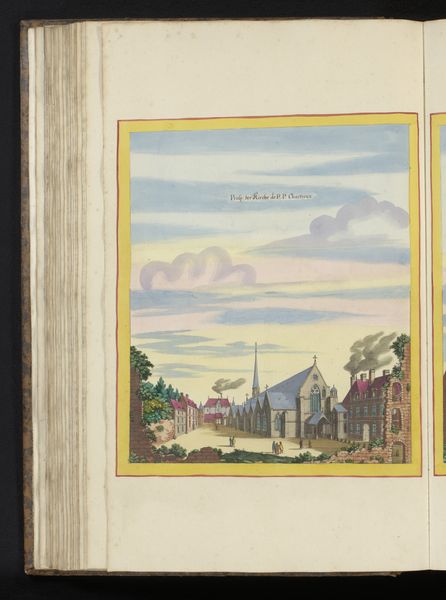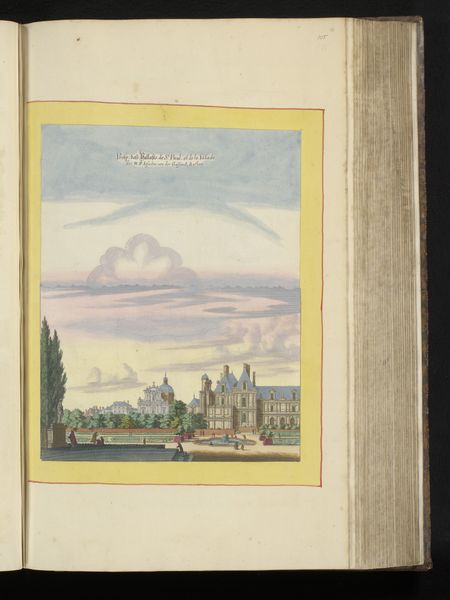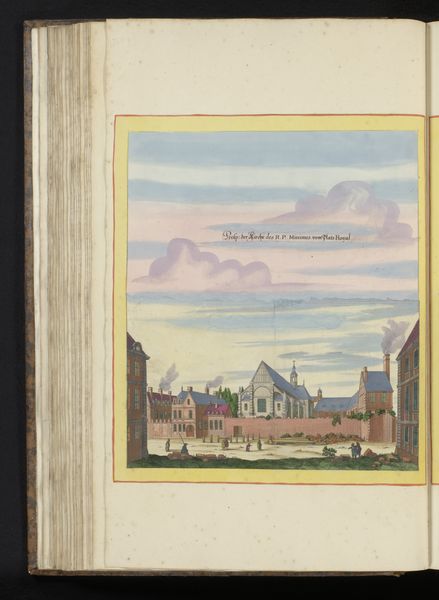
tempera, painting, watercolor
#
baroque
#
tempera
#
painting
#
watercolor
#
coloured pencil
#
cityscape
#
watercolor
Dimensions: height 330 mm, width 282 mm, height 534 mm, width 330 mm
Copyright: Rijks Museum: Open Domain
Curator: This is Matthäus Merian the Younger’s, "View of the Church of Saint-Germain-des-Prés in Paris", made around 1655 using tempera and watercolor. Editor: It’s remarkable, that hazy light. It feels so… soft and dreamlike. I’m struck by the almost pastel quality, even with the precise architectural details. Curator: Merian offers us more than just an image of the church. Look at the figures populating the square—their clothes, their activities. It speaks volumes about the socio-political context of Parisian life at the time. This area was heavily impacted by religious and political power struggles, so observing who had access to such central locations provides insight. Editor: Right, who is depicted and what does their positioning suggest about social hierarchies? But I also notice the architectural rendering. What do we know about how the artist’s decisions in composition affected public perceptions of sacred spaces? Curator: This church had a powerful Abbot whose relationships to the aristocracy in France dictated the wealth and status it enjoyed. Depicting the grandeur was perhaps not an act of innocent cityscape but instead reinforced dominant power structures in the face of public anxiety. The Baroque period was complex politically and emotionally; was this painting serving power or truthfully representing public sentiments? Editor: Interesting. I also see how the buildings almost cradle the central religious structure; however, even more interesting is that Merian painted it during a period when Paris was transforming politically, religiously, and architecturally under Louis XIV’s rule, and Saint-Germain-des-Prés occupied a central position in these seismic changes. Curator: This colored rendering, then, acts as an archive of transformation. It brings a unique dimension to understanding the Baroque aesthetic within social change. We can analyze this artwork's place in public opinion through archival and contemporary news of the period. Editor: Yes! So it’s more than just the architectural details. Considering this view through that intersectional lens makes it such a compelling document of 17th-century Parisian life. Curator: It makes us question the ways urban landscapes play crucial roles in establishing identities and political ideologies during intense historical and cultural shifts. Editor: Absolutely, and that's the kind of nuanced conversation this piece demands we explore.
Comments
No comments
Be the first to comment and join the conversation on the ultimate creative platform.
